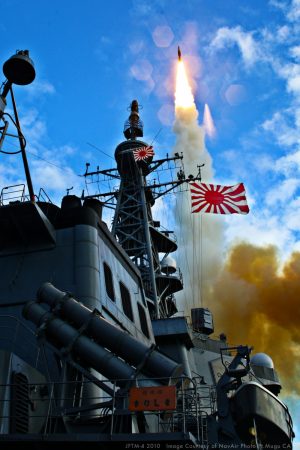This summer, Japan announced it would suspend the deployment of the Aegis Ashore ballistic missile defense system. While Japanese authorities pointed to local concerns about where missile boosters would fall to earth, the decision hinged on a wider array of concerns. It also opened the door to new worries: How would Japan approach missile threats, particularly from North Korea and China?
In the following interview with The Diplomat’s Catherine Putz, Masashi Murano, a Japan Chair Fellow at the Hudson Institute, explains the dynamics of Tokyo’s decision, the country’s existing and potential options for countering missiles, and more.
In June, Japan suspended its planned deployment of the Aegis Ashore ballistic missile defense system. Why did Tokyo make that decision?
It has several reasons for the cancellation of the Aegis Ashore deployment plan.
The Ministry of Defense (MOD) has explained that it made a promise to drop SM-3’s boosters only onto Self-Defense Force (SDF) property, which became unfeasible. This is the official reason for its cancellation.
However, in the first place, it was not appropriate to promise to only drop the boosters onto the SDF sites. This is not so much an issue of the risk of a dropping booster itself, but rather the government was too sensitive to the local public’s zero-risk beliefs. The government had to explain the risks to the locals, carefully persuade them. Even they didn’t get complete understanding from locals, the government should have been prepared to take responsibility for national security and make the decision to deploy Aegis Ashore.
Secondly, the booster issue is consequently linked to issues related to program cost overruns from acquisition to operational deployment, which exceeded the original plan. The MOD and the U.S. side had assumed that its software modifications would be enough to allow the boosters to drop safely and controllably onto the SDF property. However, it was discovered that, in fact, it would require not only software, but also a hardware modification of the SM-3, which would require a long period of time and a lot of additional costs.
According to the MOD, this issue was revealed between January and May 2020. But, I don’t find this explanation convincing; the SM-3 was originally intended to be used at sea or over large expanses of land, and is not supposed to control dropping boosters. I think it was clear from the beginning that there was no way that the problem could be solved by software modifications alone.
In addition, another reason was due to the selection of a Lockheed Martin SPY-7 radar; the U.S. Missile Defense Agency is responsible for recommending it. The U.S. plans to deploy the same radar in Alaska, but this is a stand-alone radar. The Japanese Aegis Ashore was supposed to be the first SPY-7 radar integrated with the Aegis weapon system. This would have added to the cost of the radar and Aegis system, as well as the test launch costs of expensive interceptors for integration with combat system. It was clear that this would be the case.
The U.S. side initially suggested some benefits of allowing Japanese industries to participate in the manufacture of the radar, but in reality, the U.S. was not able to achieve this. Since this is no longer possible, it has lost its benefit for the Japanese defense industry.
As a result, the original plan to deploy Aegis Ashore by 2025 is not feasible. This is the third reason.
Given the growing seriousness of missile threats from North Korea and China, it is very important to deploy them as soon as possible in order to strengthen Japan’s missile defense posture. I don’t see any option to improve Japan’s missile defense posture in the short term other than to revisit where they are deployed and make minor revisions to the original plan for Aegis Ashore.

































